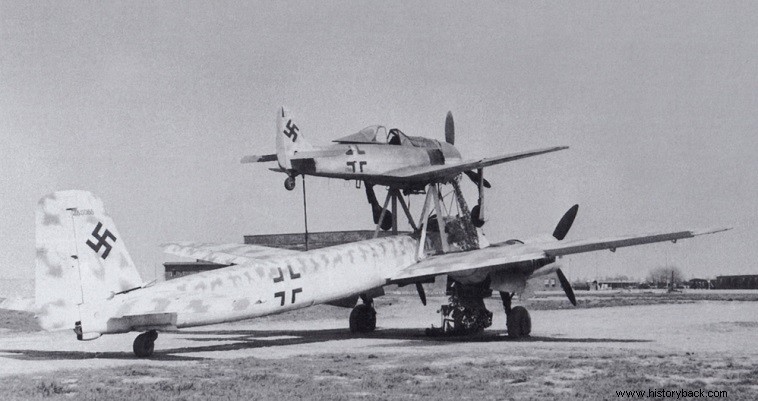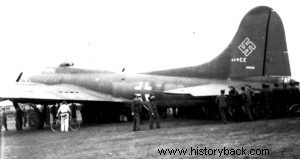
Fighter Wing 200 (Kampfgeschwader 200 – KG 200) was a special unit of the German air force that undertook special, dangerous missions and at the end of the war it also undertook suicide missions. The unit was formed in 1934 shortly after the renaissance of the German air force began. It started as a reconnaissance squadron but was subsumed into the Abwehr, the German military intelligence service.
On February 20, 1944 the group received the designation KG 200 and it included the pre-existing units and the 2nd Test Unit that had been established in 1942.
Initial Missions
The unit undertook numerous missions. Initially reconnaissance missions were carried out by civilian aircraft, in any area and for as long as this was possible. Then Junkers Ju-86P aircraft were used which flew at a height that Allied fighters could not reach.
Captured allied long-range bombers such as B-17, B-24 or Soviet Tu-2 were also used. These aircraft were also used to resupply trapped German units to fool Allied air defenses, or to transport special forces units behind enemy lines.
Secret missions
The aircraft of KG 200 on many occasions carried out many operations to transport agents behind enemy lines, both in France and deep in the Soviet Union. Such a mission was carried out as part of "Operation Zeppelin" whose goal was to assassinate Stalin. An Arado Ar 232B aircraft took off with the agents on the mission on September 5, 1944.
But the traces of the aircraft were lost. Eventually the aircraft made an emergency landing on Soviet soil without loss of life. Finally the two would-be assassins of Stalin were arrested. The unit carried out operations to transport agents to and from North Africa until early 1944. On the night of 27 November a Junker Ju 290 of KG 200 dropped five Iraqi agents by parachute in Mosul, having started from Vienna.
Mistel, the aircraft flying bombs
Due to a lack of strategic bombers in the German air force the idea of the flying bomb aircraft was born. The design was simple and involved the combination of two aircraft, connected to each other. The first, a single-seat fighter was the manned guidance aircraft and the second, an unmanned bomber was the bomb.
When approaching the target the control aircraft guided the bombing aircraft to the target. However, Mistel did not prove particularly successful. KG 200 charged the Mistels and used them against the Soviets. Their most notable attack was against bridges in the Kistrin area where they hit two bridges.
On 12 April 1945 a Dornier Do-217 bomber of KG 200 successfully used a Henschel He 293 guided bomb against bridges on the Oder River in an attempt to delay the Soviet advance.
Suicide bomber
In the desperate situation prevailing for Germany in the last months of the war, the idea of creating a suicide squad on the model of the Japanese kamikaze was proposed. This squadron was named "Leonidas" and joined KG 200. The project was named "Sacrifice".
German kamikaze pilots would fly manned prototypes of the V1 flying bomb, the Fi-103 Reichenberg . Several tests were carried out but the program was canceled due to the insistence of Squadron Leader Vernen Baubach, commander of KG 200 who did not want to sacrifice his pilots unjustly. Another suicidal suggestion involved the destruction of Russian floating bridges on the Vistula River using Dornier Do-24 seaplanes.
With enemy aircraft
KG 200, as mentioned, also used many Allied aircraft. Its first B-17 "Flying Fortress" belonged to the US 303rd Bombardment Squadron and was forced to make an emergency landing on 12 December 1942 in France. Repaired and given to KG 200.
In more or less the same way, other Allied aircraft were acquired, from the B-17 and B-24, to Spitfire, Mosquito, Beaufighter, P-38, Short Sterling and I-16. One B-17 of the unit flew as far as Spain, but was held there. The aircraft was carrying agents.
In 1944, KG 200 was also assigned a paratrooper battalion. The battalion is believed not to have belonged to the Luftwaffe, but to have been the 500 SS Parachute Battalion.
In his final days the unit withdrew to southern Germany destroying its records. As for Baubach he never mentioned anything about the action of KG 200. After all, he himself was killed at the age of just 36, in 1953, in a test flight, taking many secrets to his grave.

One of the American B-17 bombers that used the KG 200.
